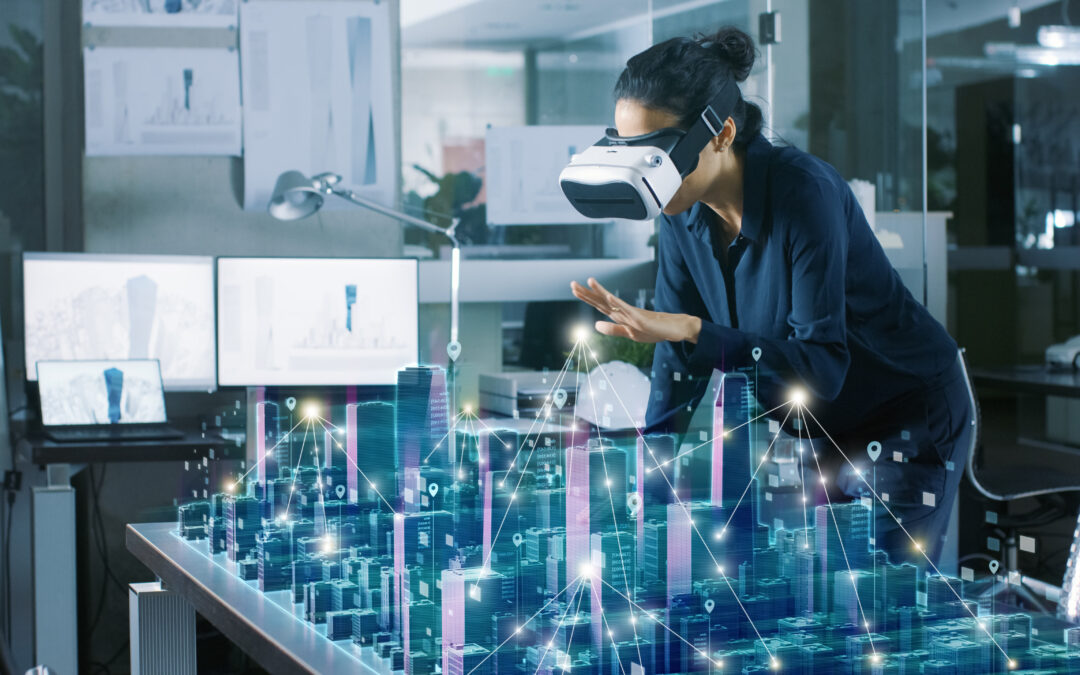The digital revolution is changing the priorities of office design.
Forget the long-fought battle between the open office and the cubicle. The future of office design will focus on sustainability, incorporating artificial intelligence and mobilizing a global workforce, according to Future Offices.
Artificial Intelligence is the Top Office Design Trend
Artificial intelligence (AI) can enable improved modeling capabilities and optimize building construction, but it will also change the goals of office design. Offices will increasingly need virtual technology, like touchscreens and other interfaces, to facilitate human/bot interactions as workers across all industries and functions start to work closely with artificial intelligence each day.
Ambient Technology in Office Design Trends
AI-powered ambient intelligence will be used to identify where employees are in the office, what they’re working on, and then adapt to their needs. Future Offices uses this example to explain: “If a person is working on a complex task, the system will automatically adjust the lighting and temperature to promote deep concentration. If a lively meeting is going on, the room will adjust its settings to promote alertness.”
Ambient intelligence has benefits well beyond productivity and wellness. In potentially hazardous workspaces, like factories and hospitals, it could identify workers who violate safety rules or are at risk for injury and alert them.
How Office Design Will Support Globalized Workforce
The rise of wireless devices, shared interfaces, and collaborative software means the traditional conference room has become obsolete. Coupled with the rise of flexible work arrangements and remote work options, offices will require less space in general. Workers will transition in and out of the physical office and workspaces will need to have the agility to accommodate them.
Sustainable Office Design Trends
Environmentally friendly office design is good for business. It’s a potential differentiator when it comes to winning the war for talent and eco-friendly choices such as natural lighting, Biophilia, and non-toxic building materials have been scientifically proven to increase worker productivity. Energy efficient savings add up in business, between 2015 and 2018, LEED-certified buildings in the U.S. are estimated to have $1.2 billion in energy savings.
Filings for green construction related patents (i.e. renewable energy sources, “green” lighting, energy efficient HVAC systems) have tripled over the past decade and are expected to become the norm by 2030.
More on Office Trends:
Why You Need to Train Employees for Future Tech
2 Simple Strategies to Improve Office Culture
Are Employees Who Work From Home Happier?

